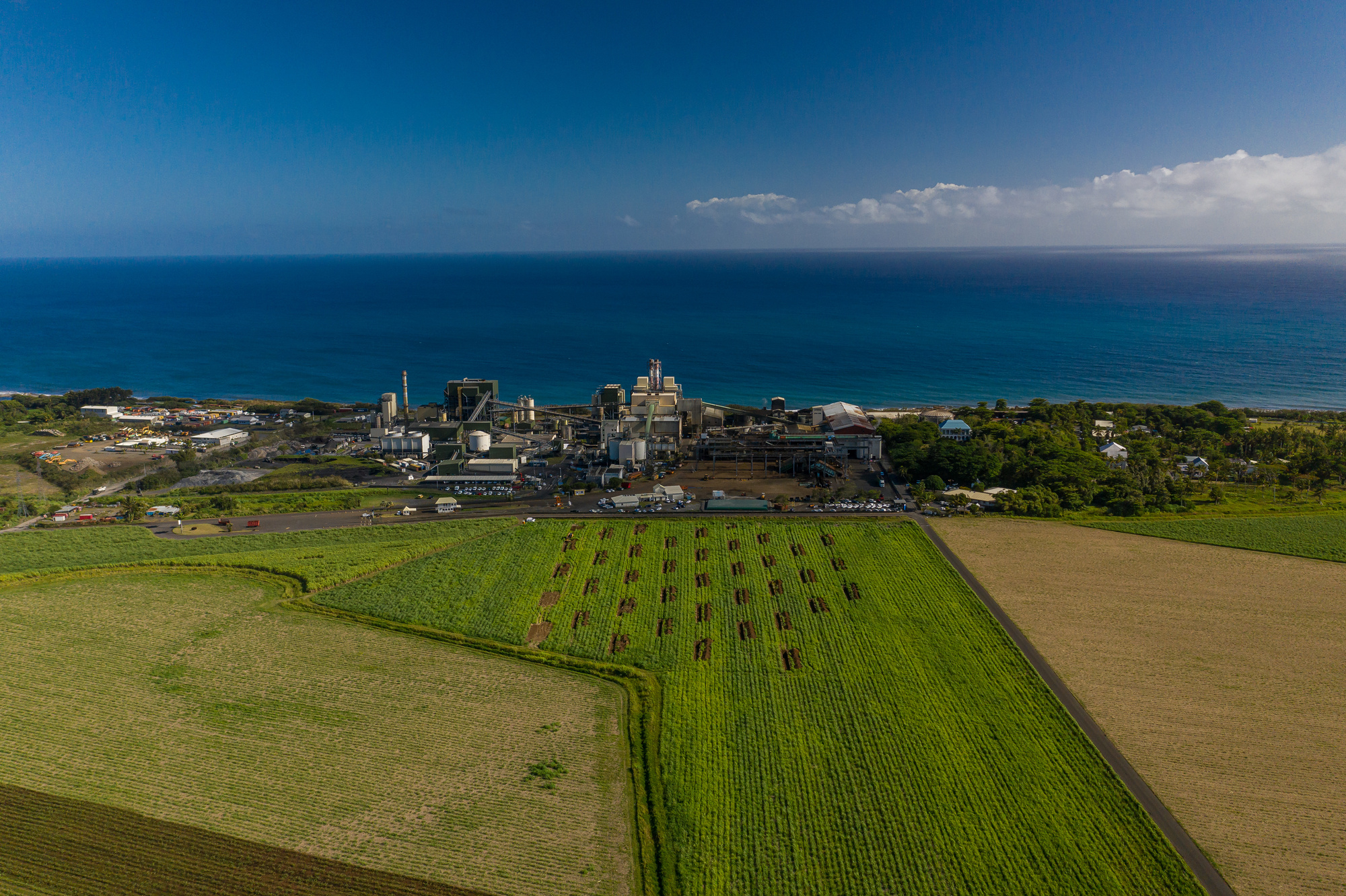
- Home
- Archaeology on Reunion Island
- Sites
- Saint-André
- Chemin Bois Rouge
The Bois Rouge plain to the far northwest of the district of Saint-André is a clogged former bay that has retained its marshland appearance despite being cultivated from the early 19th century onwards. It is known mainly for its sugar processing plant first mentioned in 1817 on the estate of François-Xavier Bellier-Montrose.
An archaeological evaluation was carried out in 2020 on a four-hectare sugarcane plot at the foot of the Bois Rouge sugar plant. Thirty-nine test pits opened with mechanical diggers confirmed that the plot was not occupied for functional purposes related to the factory from its creation in 1817 or at an earlier date.
The stratigraphy is even across the area. Under the present-day ploughing and crops levels, at a depth of slightly more than 0.5 metres, a brown silty argilloarenaceous soil horizon some 15 cm thick is likely to be the paleosol. The natural soil appears at an average depth of 0.75 metres.
One test pit opened at the top of the paleosol revealed a distinctly red ferrous area measuring at least 15 sq.m. by more than 10 cm thick. It is tempting to interpret this as a very large area of fire made preparatory to the cultivation of the plot when the sugar processing plant was first built. However, the lack of finds makes it impossible to claim this with any certainty.
Although the evaluation did not reveal evidence of long-term occupation, it did shed light on changes in the landscape. The geomorphological data collected could be used for future archaeological operations in the Bois Rouge plain.




